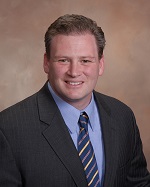The Relationship of TRIZ Principles to Deformity Correction in Surgery
Robert Joseph, DPM, PhD
Charcot neuroarthropathy is a devastating and crippling condition that results in foot and ankle deformities which cause wounds. At one time, amputation was the primary treatment of severe Charcot deformities however advances in surgical instrumentation and surgeon technique now enable reconstruction of deformities that previously required amputation. The pathway of innovation in Charcot surgery is consistent with applications of TRIZ principles however formal adoption of systematic processes of innovation in surgery is uncommon.
Several challenges exist to surgeon adoption of systematic methods of innovation and include 1) difficulty applying engineering based systems to clinically relevant physiology 2) contextual differences between systematic processes of innovation and impromptu innovation that most commonly occurs in surgery when complications arise. This presentation will include a surgical case series demonstrating how select TRIZ principles apply to advancements in Charcot surgery. Recommendations will be made on how TRIZ concepts can be contextually framed to facilitate physician oriented problem solving in a patient care environment. Conceptual relationships between several TRIZ principles and clinical physiology will be highlighted through case studies.
BIOGRAPHY:

Robert Joseph D.P.M., Ph.D., is a practicing board certified foot and ankle. He is a clinical trial investigator with the Providence Center for Research and member of the editorial board of the Journal of Foot and Ankle Surgery. His specific research interests include healthcare innovation and the development of multidisciplinary research teams.